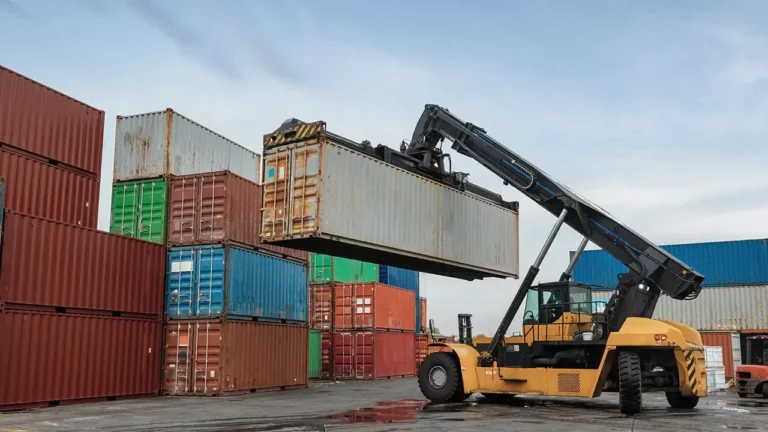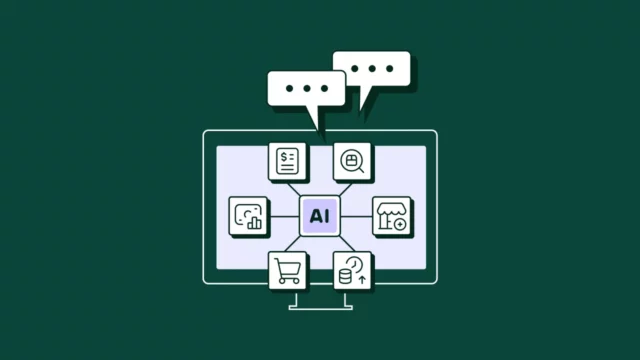Order.co’s Tariff AI: The Key to Overcoming Procurement Challenges

Order.co’s Tariff AI: The Key to Overcoming Procurement Challenges
2025’s new tariffs are set to transform the cost and complexity of doing business. The United States government announced a 10% baseline tariff on imports from all trade partners in early April, causing stress among business owners who rely on products from overseas vendors.
With all of the uncertainty, one thing is certain: businesses that can adapt quickly will be the ones that come out ahead. Read on to find out how Order.co’s AI can help you proactively avoid the impacts of cost increases and supply chain disruptions.
How 2025 tariffs are driving up prices – and what it means for you
The latest tariff policies apply pressure on pricing strategies and supplier relationships, which businesses anticipate will increase the price of imported goods. In response, businesses may try to negotiate lower prices with exporters, absorb the expenses, or pass them on to consumers in the form of higher prices.
For example, if a large pack of paper towels costs $10 to import from an overseas supplier and is sold to your business for $25, a 20% tariff would only apply to the $10 import cost. This may result in a price increase of $2 rather than the full 20%. However, it’s worth noting that some vendors may use tariff hikes to justify raising their prices beyond the actual cost impact.
Several policy changes are driving these shifts and signaling broader impacts ahead:
- Tariffs are increasing sharply across key sectors, including textiles, electronics, food, and automotive parts.
- The de minimis exemption, which allowed small-value imports to avoid duties, is being phased out.
- U.S. trade policy is placing more scrutiny on sourcing from China, which is expected to escalate supply chain disruptions globally.
Although these policies went into effect less than a month ago, they’re already having a measurable impact on the economy.
What the data says about tariff impacts
The ripple effects from increased tariffs may extend beyond import costs, influencing both inflation and consumer spending power. Inflation has been a persistent concern since the pandemic, and economists predict that the latest tariffs could push the U.S. inflation rate even further – up to nearly 4%.
This translates into consumers paying about $3,800 more in 2025 for goods like coffee, clothing, and appliances compared to 2024, according to a Yale economist. As buyers tighten their budgets and prepare for economic decline, business owners are already wondering how they can keep their products affordable for customers.
The largest anticipated price increases include:
- An overall price rise of 2.3% in the short term, with April’s “Liberation Day” tariffs alone contributing 1.3%.
- Increases of up to 17% for clothing and textiles.
- Significant hikes on electronics, such as iPhones, due to a combined tariff rate of up to 54% on imports manufactured in China.
- A 2.8% increase in food and grocery prices, with fresh produce spiking by as much as 4%.
While every business will feel the effects of the new tariff policies differently, the data paints a clear picture: companies need upgraded sourcing strategies to maintain cash flow and avoid falling short of customer expectations.
How Order.co’s tariff AI drives resilient supply chains
Order.co empowers businesses with a seamless online purchasing experience for everything they need to buy, while maintaining complete spend control. As a best-in-class B2B Ecommerce solution, the platform has built-in AI sourcing capabilities that identify optimal vendors based on various factors and customer preferences like price points, lead time, supplier reliability, and more.
With every action a user makes on the platform – from avoiding a certain vendor to rejecting a product suggestion – the AI learns and optimizes its future recommendations. The system operates on a global feedback loop, meaning that if multiple users submit support tickets for a particular item, the AI will flag the issue for all customers. As a result, teams no longer have to worry about the quality, deliverability, or cost efficiency of their orders.
The AI sourcing algorithm is constantly improving and adjusting to customers’ needs, making it invaluable as teams scramble to reassess their vendor contracts. In light of the recent forecasted pricing hikes, Order.co built tariff AI agents that actively monitor policy-related data to help inform the sourcing algorithm’s recommendations.
This powerful combination of real-time policy monitoring and user-specific product recommendations gives businesses what they need to proactively mitigate risks in their procurement strategy. Order.co’s sourcing AI helps support resilient supply chains by delivering:
- Tariff-aware sourcing analyzes cost fluctuations, supplier reliability, and tariff exposure to recommend optimal vendors.
- A robust vendor network helps customers pivot away from high-tariff regions and identify suppliers with more favorable trade terms.
- Real-time policy parsing alerts businesses about the latest government trade updates long before they disrupt operations.
- A global intelligence loop that makes sourcing recommendations smarter by learning from every customer transaction, return, and support ticket.
With all of these capabilities working in tandem, your business can gain unprecedented control and visibility over your supply chain.
How procurement teams can beat uncertainty with tariff AI
The widespread price increases may look intimidating, but teams that leverage Order.co’s AI won’t have to worry. The platform’s built-in tariff AI tools take care of the heavy lifting through the entire procure-to-pay cycle, so you can avoid the biggest trade policy impacts without moving a finger.
For example, if your business sources products from AliExpress that previously qualified for the de minimis exemption, you would anticipate a sharp increase in costs. However, Order.co’s sourcing AI can identify the same SKUs from vetted U.S. suppliers – or discover comparable alternatives from both domestic and international vendors – at the click of a button.
At a time when being proactive is so critical to success, businesses that use Order.co will have a competitive advantage. The platform’s predictive models can simulate various tariff scenarios to forecast their potential financial and operational impacts on a company. They take variables like fluctuating tariff rates, historical price trends, and lead times to help you prepare for cost changes before they happen.
Overcome tariff turmoil with Order.co’s sourcing AI
Tariff volatility isn’t going away – but with Order.co on your side, it doesn’t have to slow you down. The platform is loaded with industry-leading technologies designed to help you adapt, source smarter, and stay ahead of the latest policy changes. While your competitors scramble to adjust their procurement strategy, you can rest assured that the sourcing AI is always at work, finding the most reliable suppliers and cost-effective products on the market.
Register for the ChatP2P: AI & the Back Office series to understand how procurement and finance teams are tackling their biggest challenges by leveraging AI.
Get started
Schedule a demo to see how Order.co’s sourcing tools can offer peace of mind and allow you to focus on growing your business.
"*" indicates required fields



